The 10 best places to visit in Tanzania

Tanzania is one of the leading safari destinations in Africa.
Travellers looking for the ultimate safari experience will love the national parks of Tanzania where an abundance of wildlife can be observed.
From north to south, Tanzania has several national parks where you can experience unforgettable safari moments. Aboard 4x4 open vehicles, driven by guides, experts and wildlife enthusiasts, you will experience unique face-to-face encounters with the wildlife and breathtaking natural landscapes.
Tanzania is also a favourite destination for hiking trails, including the famous Mount Kilimanjaro, known as the "Roof of Africa". Between safaris, trekking and hiking, and encounters with local ethnic groups, Tanzania also offers real moments of relaxation in the Zanzibar Archipelago, with white sandy beaches and beautiful coral reefs (great for diving) on the islands of Mafia, Chumbe and Pemba. For those wanting to discover the culture, Stone Town, on the main island, is a popular choice.
Tanzania remains a high-end destination where the cost of travel is still high but where the real change of scenery and break from routine makes a visit worth every penny.
Discover all the essentials for your trip to Tanzania.
Tourist attractions
Our selection of must-see places
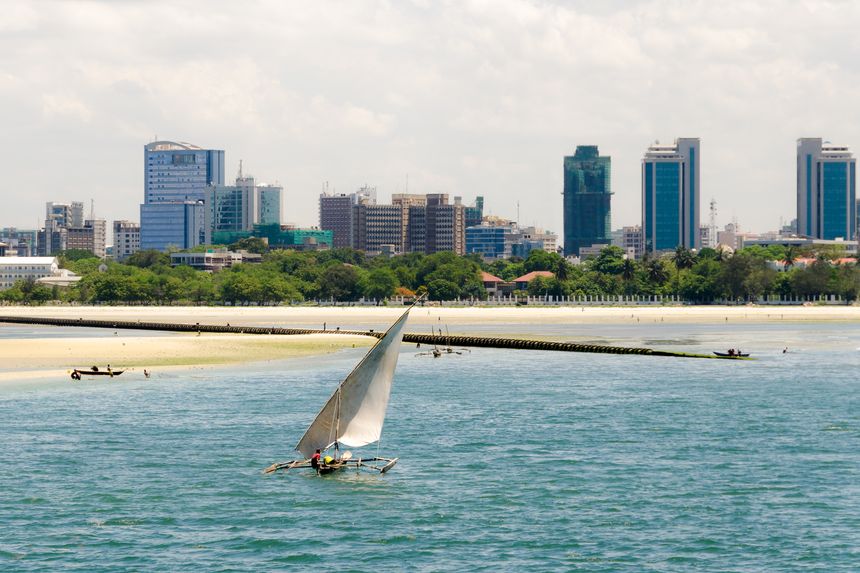

Dar es Salam
The port city of Dar es Salaam is home to a national museum which displays important artefacts relating to the history of Black Africa civilization. As a city stopover, it offers various tourist attractions including beaches. Many sites, such as Oyster Bay, are ideal spots for windsurfing.
Museums | Art & Culture | Beaches | Heritage
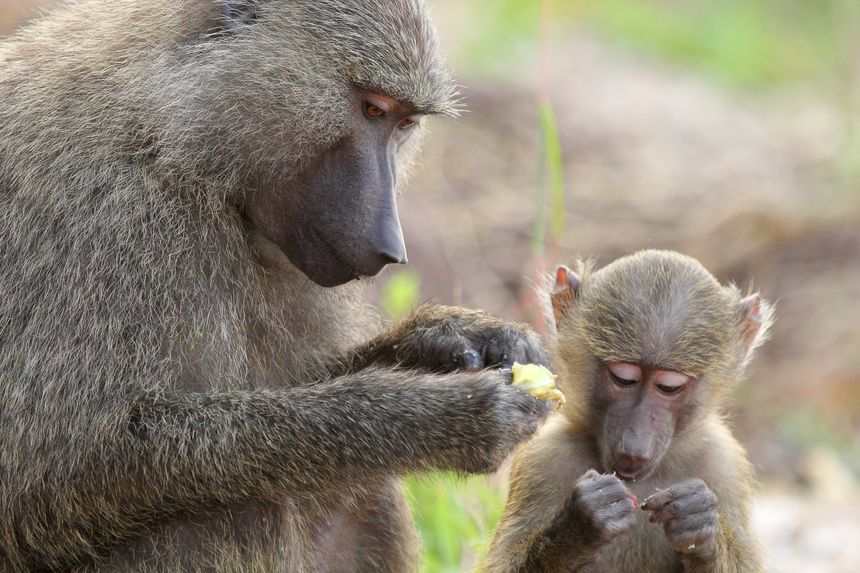

Gombe Stream National Park
As the smallest park in the country, with an area of only 52 km2, Gombe Stream National Park is located in the north of the country between Lake Tanganyika and a mountain range. It owes its reputation to Jane Goodall, a primatologist who moved to the region in 1960 to study chimpanzees. Since this time, the game reserve has become a national park, a real sanctuary for chimpanzees, baboons and many species of birds.
Nature reserve | Animals
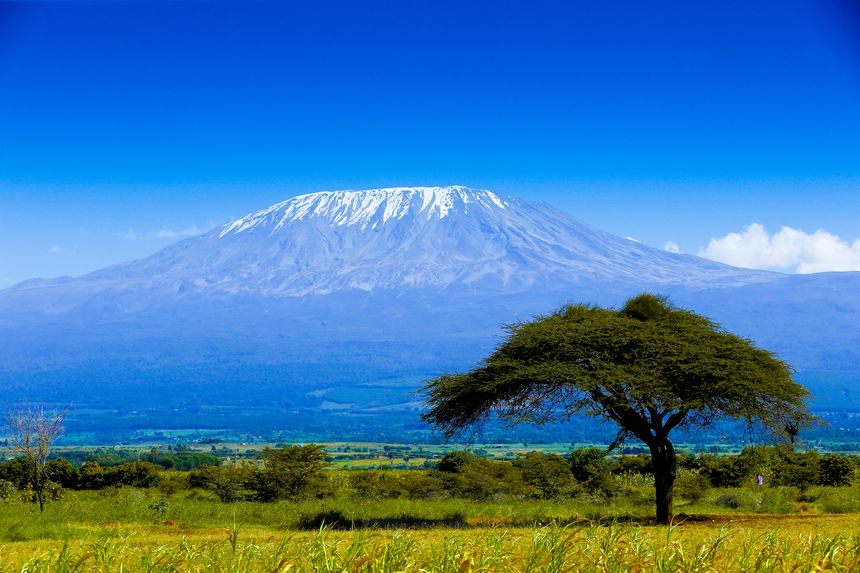

Kilimandjaro National Park
Kilimanjaro, with its beautiful snowy peaks, is surrounded by savannahs and forests where grass species and larger trees like the Baobab continue to delight. The surrounding forests, such as the dry forest or the Njoro forest, are sometimes considered sacred places shrouded in mystery. Kilimanjaro is THE destination for African safari lovers.
Mount Kilimanjaro, or the "roof of Africa", stands majestically on the southern border with Kenya. It is the highest summit in the world accessible by foot (5,896 m), a true paradise for those who love hiking and trekking in a stupendous setting. The climb, that lasts a few days, is accessible to experienced walkers. It includes two main peaks, the Kibo and Mawenzi, and six paths which take you to the summit: Marangu and Machame, the most beautiful and probably the easiest, and then Mweka, Umbwe, Shira and Rongai, suitable for more experienced hikers. It is best to climb with a group, accompanied by a guide.
Mountain | Hiking | Nature | Safari
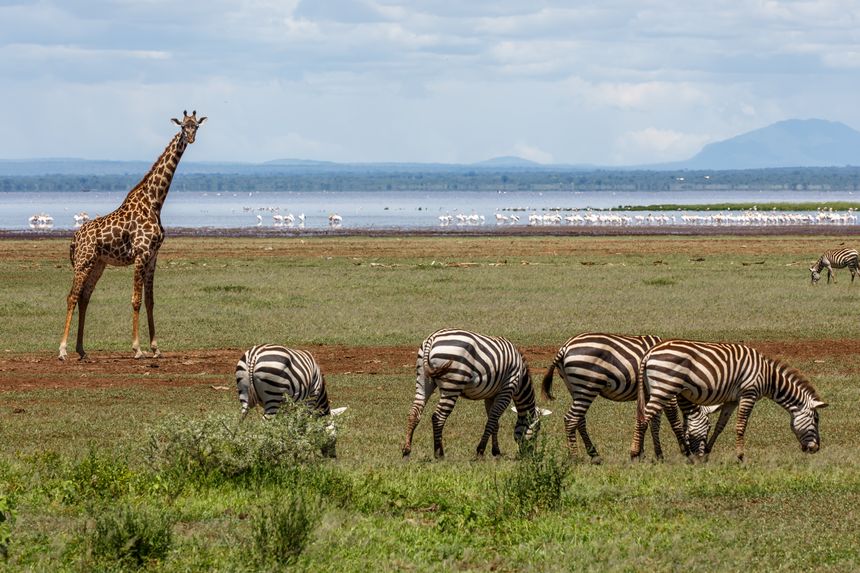

Lake Manyara
Despite being home to a wide variety of wildlife, such as giraffes, lions, leopards, hippos, baboons and monkeys, visitors often mistakenly overlook Lake Manyara National Park. Its dense undergrowth is populated by many varieties of butterflies, which add a magical touch to your visit! The further you go into the park, the drier the vegetation becomes and eventually the forest gives way to bushland. The fauna is also different; this is the home of wildebeest, zebra and buffalo. Around Lake Manyara, a shallow alkaline lake, many animals come to cool off; it’s here that you will see many birds and waders such as pelicans or flamingos.
Animals | Safari | Nature | Nature reserve
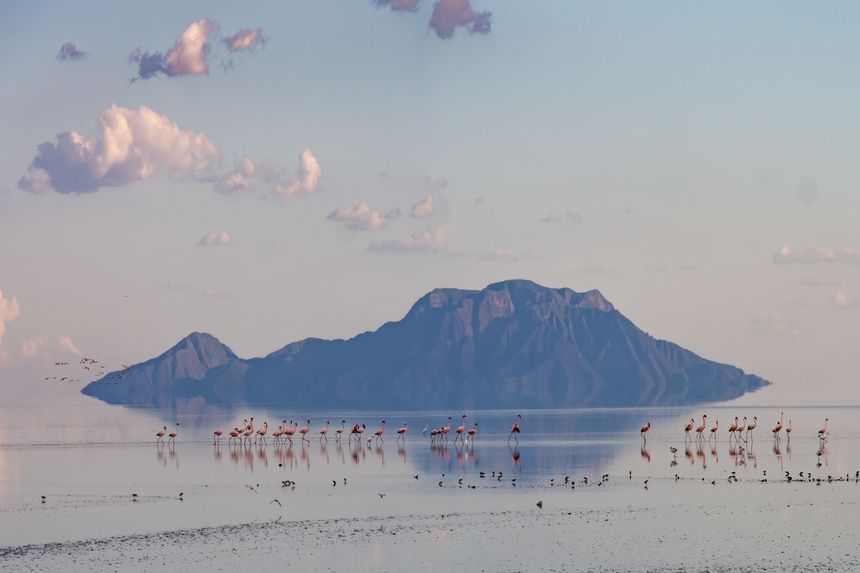

Lake Natron
Lake Natron is located in the far north of Tanzania, on the Maasai lands who are the perfect guides for you to discover this region. The south of the lake is the most visited part, facing the impressive Ol Doinyo Lengai volcano, the "mountain of Maasai gods", which is still active today. Lake Natron is located in a very arid region and the lake's water is saturated with sodium, meaning fauna and flora is almost non-existent. Only dwarf flamingos and birds seem to feel at home in the lake’s waters. Viewed from above, you can admire the colour of the lake: pink, red or blue depending on the season and the depth of the lake.
Animals | Lake | Nature
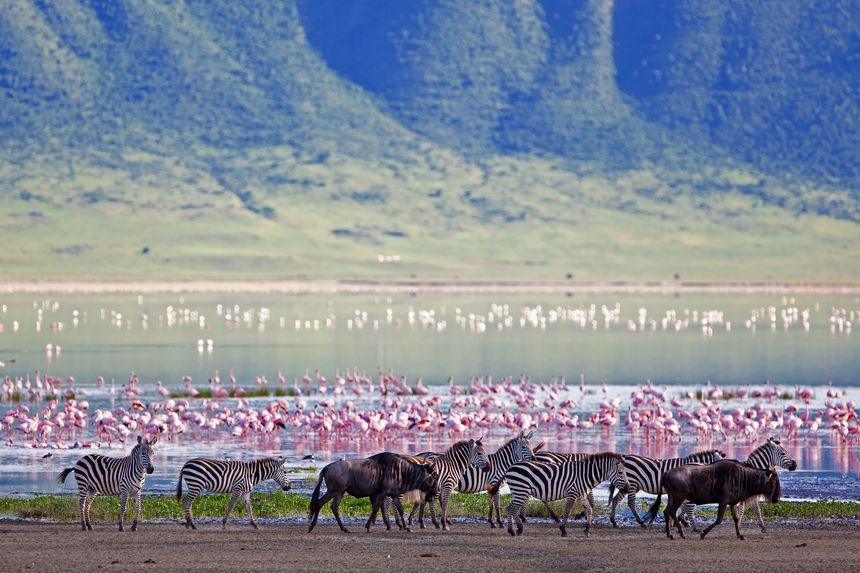

Ngorongoro Crater
Between the highlands of Karatu and the northern tip of Lake Eyasi, the Ngorongoro Crater is open daily from 7am to 6pm and most visitors spend the whole day there. On site, picnic areas have been set up. This vast circular area, of more than 20km in diameter, was formed following the collapse of a volcano. Ngorongoro is the largest intact and unsubmerged caldera in the world. In addition to the incredible beauty of the surrounding landscape, the crater is home to many animals including a high number of flamingos, hippos and buffaloes that bask quietly in the site’s year-round water reserves.
Animals | Nature | Nature reserve
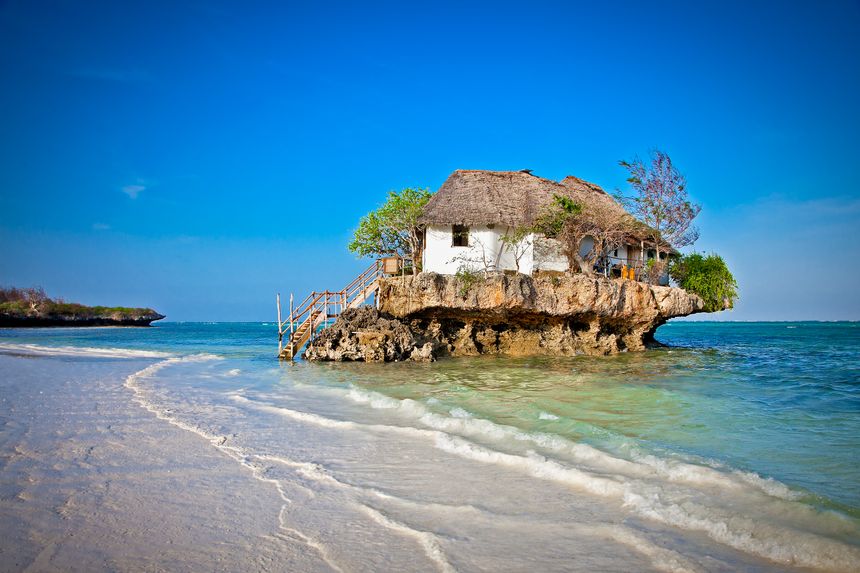

Zanzibar
The semi-autonomous province of Zanzibar is located 40 km from the coast. It is an archipelago made up of several islands and islets. In terms of culture, traces of past British, Arab and Indian colonial civilizations are still evident. Begin your visit in Stone Town, the historical heart of Zanzibar city, and take in the Swahili architecture with its elaborate wooden doors, the Arab Fort and the Royal Palaces which can also be visited. Besides its rich culture, the spice island has many idyllic beaches that will delight lovers of relaxation and swimming. Diving, snorkelling and many dolphin tours are also possible from Zanzibar.
Island | Sea | Beaches | Art & Culture | Heritage
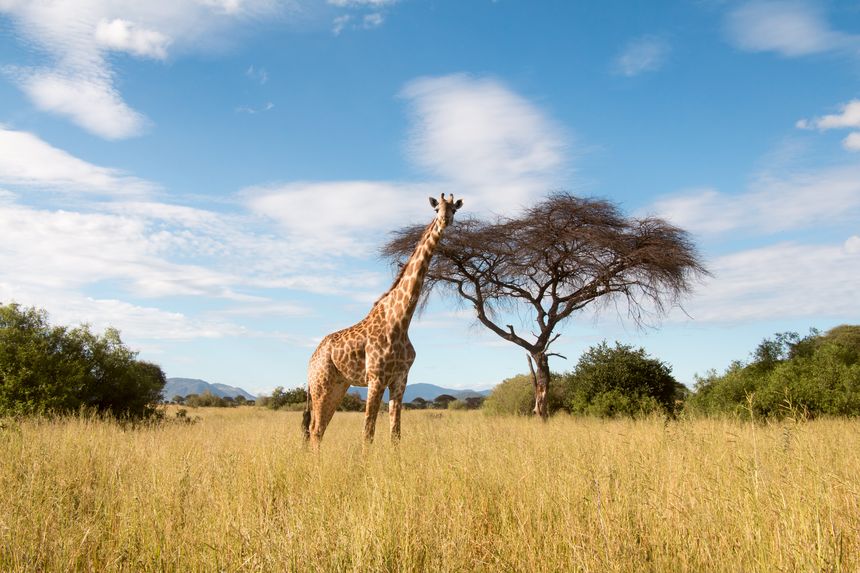

Ruaha National Park
Just a two-hour flight from Dar Es Salaam, this is the largest park in Tanzania! More than 21,000 km2 of unspoilt nature. The Great Ruaha River attracts many animals: birds, buffaloes, antelopes, lions, leopards, antelopes and more than 10,000 elephants; it is the largest concentration of elephants in the country. You will be immersed in the very heart of nature, in the middle of the savannah and surrounded by baobab trees; you are assured of a real change of scene! Ruaha Park specialises in luxury safaris. There are three high-end camps in the heart of the park, enabling you to experience the wilderness, yet with all the home comforts you might expect.
Safari | Animals | River | Nature reserve
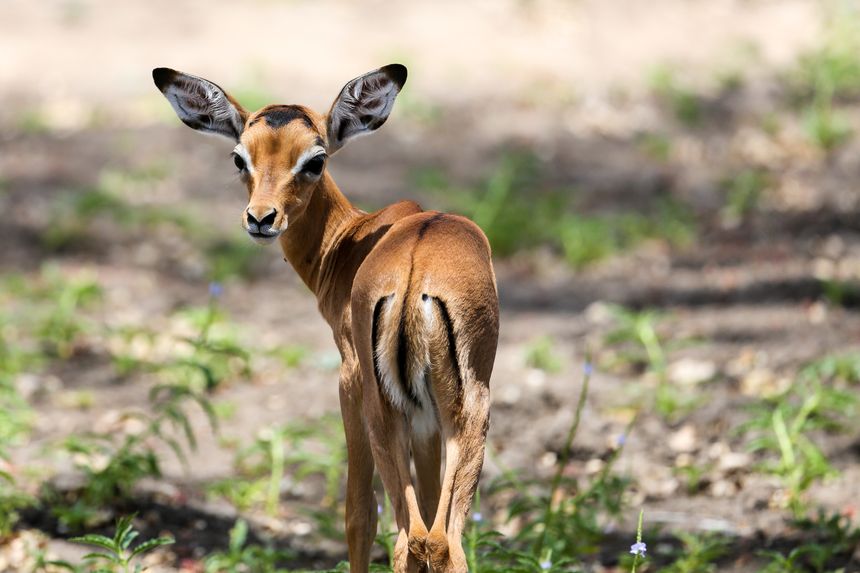

Selous Reserve
This reserve, declared a World Heritage Site by UNESCO in 1982, is home to a rich fauna of hippopotamus, crocodiles and birds. It’s also one of the rare reserves where you can find African wild dogs (small wolves that can only be found in Africa). This vast reserve occupies nearly 5% of the territory and is the largest in the country. The Selous Game Reserve is very popular because there are few visitors yet a lot to see. You can also enjoy a boat safari on the Rufiji, which winds along 250km from its source in the highlands to the sea.
Nature reserve | UNESCO World Heritage | Animals | Safari
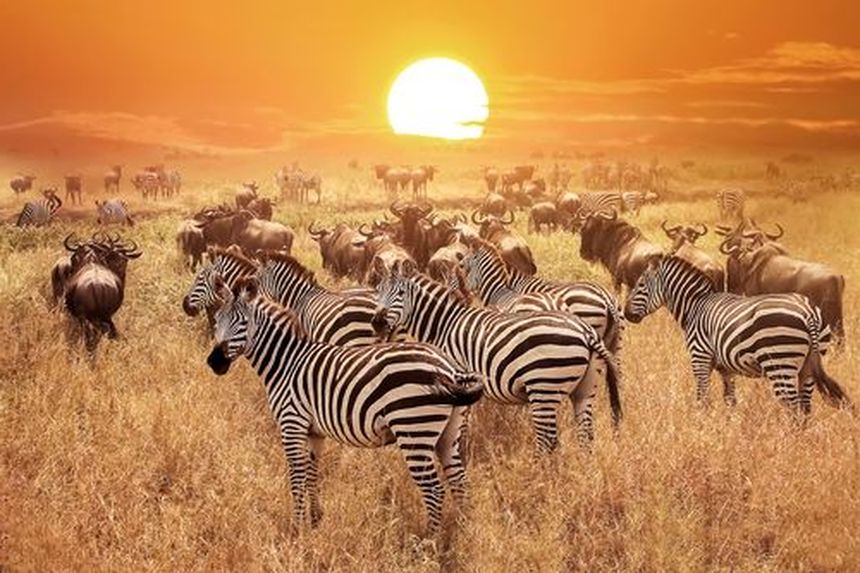

Serengeti National Park
Probably one of the most famous game reserves in the world, the Serengeti National Park is now up there with the best. Fans of safari photography will be spoilt for choice with the sheer number of savanna animals passing by, sometimes in convoy. Covering an area of more than 14,000 m2, discover endless plains and an abundance of animals: wildebeest, zebras, warthogs, gazelles and more importantly the famous "Big Five", lions, leopards, elephants, buffalo and rhinoceros. A 4x4 safari in the Serengeti National Park promises you unforgettable memories. For an all the more impressive and memorable experience, schedule your visit to the Serengeti Park during the Great Migration, when thousands of mammals (mainly wildebeest and zebra) are on the move to join greener pastures.
Safari | Nature reserve | Animals | Nature

Travel writer and photographer
Marlène's review
When you say the word Tanzania, people often think of safaris... But Tanzania is not just about safaris. Obviously travelling through Tanzania means you will have the opportunity to observe the wildlife that roams the beautiful national parks in the north and south of the country.
Indeed, experiencing a trip to Tanzania may also mean making one of your childhood dreams come true, becoming a spectator of unique animal spectacles like during the Great Wildebeest Migration in Serengeti National Park, or during safaris in the magnificent national parks. For example, the beautiful natural site of Ngorongoro in the north of the country, or the Selous reserve in the south.
Tanzania also delights visitors with its local ethnic groups, including the Maasai, and visitors can spend time getting to know them in the Longido region, north of Arusha.
Northern Tanzania is the most visited and most touristic region of the country while the south is wilder and less crowded. It is advisable to plan your trip to Tanzania well in advance, since there is growing demand for services and an increasing number of visitors.
You may also like
-
Flights to Tanzania
All you need to know before buying your plane ticket
-
Tourist maps
Region, attractions and distance map Tanzania!
-
Hotel or vacation rental?
Find your dream accommodation in Tanzania at the best price...
-
When to go?
Be sure to visit Tanzania at the best time of year!
and why not...
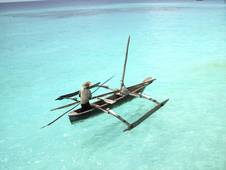 Zanzibar
Zanzibar




